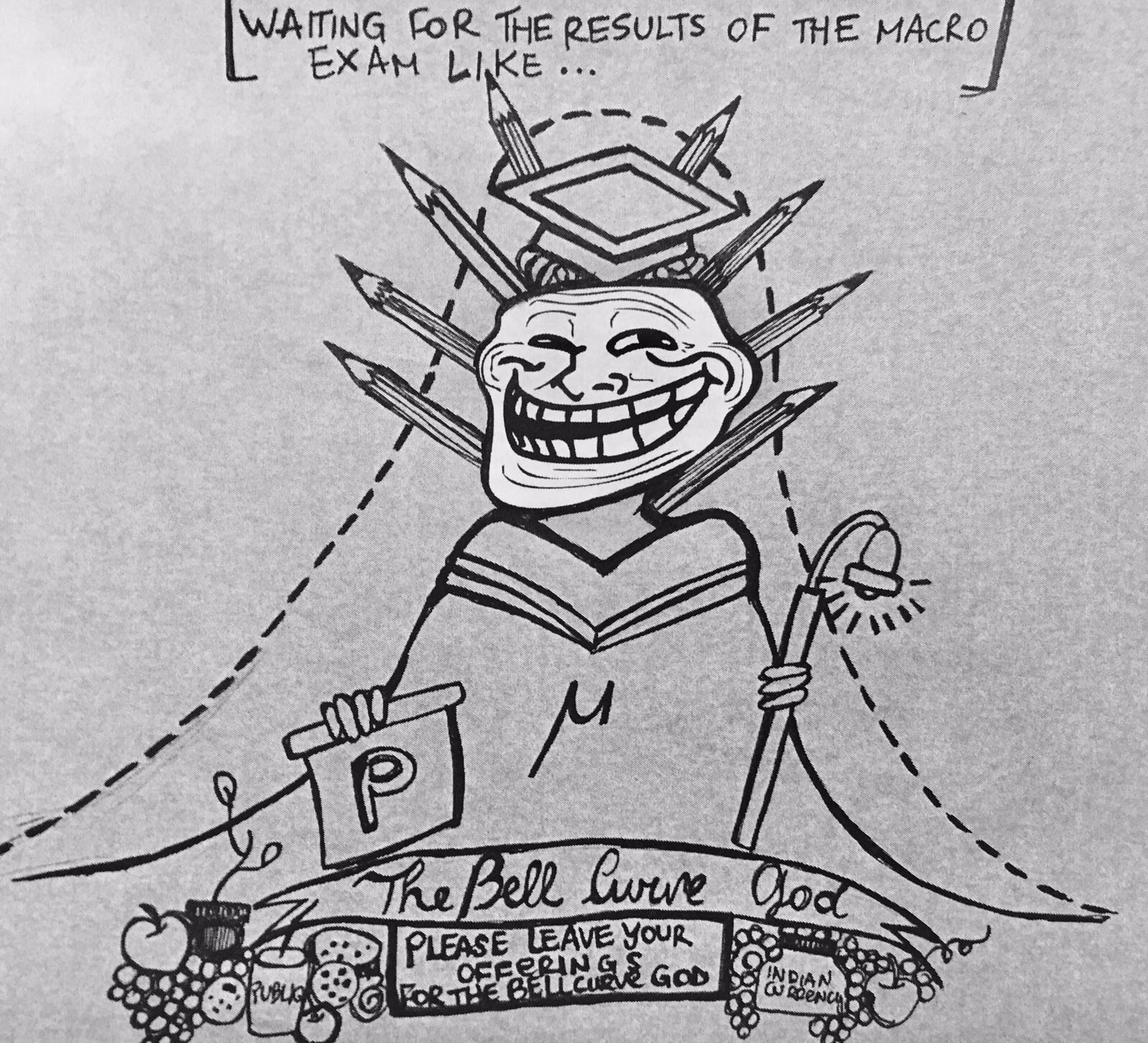Full Disclosure Course Review: Macroeconomics
Disclaimer: The views in this article are purely those of the author and do not necessarily reflect those of The Morningside Post.
Strap yourself in and hold on. Professor Bubula, the Italian pentathelete-turned-Ph.D, is warm in demeanor, but respects a good, intense training session; after all, anything less would be a disservice to you. More information is chucked at you in one class than even the best students can process and absorb. Battered after the session, students often retreat to the library and review his lecture notes.
People seem to have different tactics when sitting in his class – some write down everything and hope to review it later, others accept that not everything will be noted down, and just focus on listening to try and understand the conceptual logic. The second way works well since the lecture notes Prof. Bubula prepares are very lucid and complete – don’t let the typos and misspellings make you think otherwise. Keep in mind that one 1.5-hour lecture might cover 10+ pages of single spaced notes! Prof. Bubula keeps a tight schedule during the class, always pushing up on the 1.5 hour time limit. Imagine doing this 2x / week for ~14 weeks and you start to appreciate how much material there is to cover.
Since Macro is a core requirement, a relatively large proportion of SIPA is taking his class at any time. As such, SIPA somewhat shuts down for the week before Macro’s first midterm, second midterm, and final as everyone prioritizes these tests on top of student organization-related responsibilities, happy hours, or even other classes. If you are not in Macro this semester, prepare to hear: “Sorry, Macro Test on Friday, can’t go to the [enter fun activity here].”
The tests are fair, but because you have covered so much material, they will naturally be stressful. Honestly, this should be a 4 (or 5) -credit course. Different students have different studying methods – some focus on notes, some on practice questions; some have a mechanical understanding (that is, memorize how things relate to each other) and some pursue a more intuitive understanding (make sense of the underlying concepts). Students who try a mechanical understanding on a test will suffer three hours of uncertainty and hesitation as they begin to tell themselves “don’t worry, there will be a big curve, right?”.
Illustration by Alessandra Felloni
About 10 days or so before each exam, the Professor posts on Courseworks all tests and grading rubrics (i.e. answers) from the past 6-8 semesters. In the grading rubric you can read his instructions on how the DRA should grade the test such as, “give 1 point for trying”. The tests are graded more than fairly, but students should not get complacent. Watch for Curveballs.
Curveballs identify who had a “mechanical” understanding from an “intuitive” understanding. He adds just enough variation to require a logic jump – not something that the "mechanics" can do well. I would recommend using the practice questions to identify your weaknesses in intuitive understandings. Afterwards, review the notes or go to office hours to fill the gaps.
Bubula is a great professor. Everyone I know thinks so. One thing which marveled my friend and me was how he managed to essentially memorize the notes. Goes through them each class without looking at them! He had to look at them once during all the lectures, and apologized before doing so.
For me, I thought it was a great course. After a course like this, you really have the confidence in the course material and it is quite relevant and practical, too. The final project, the policy memo, requires that you write a letter to a policy maker using some of the theory you have learned in class. Again, considering the breadth of material covered, you can touch upon taxes, balance of payments, labor movements, almost any economic-related news source can apply a principle you used in the class.
Happy studying!

